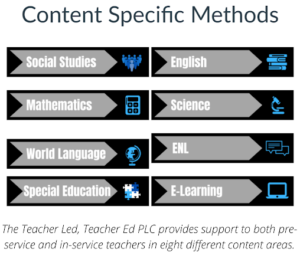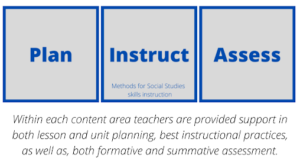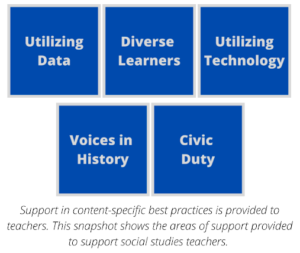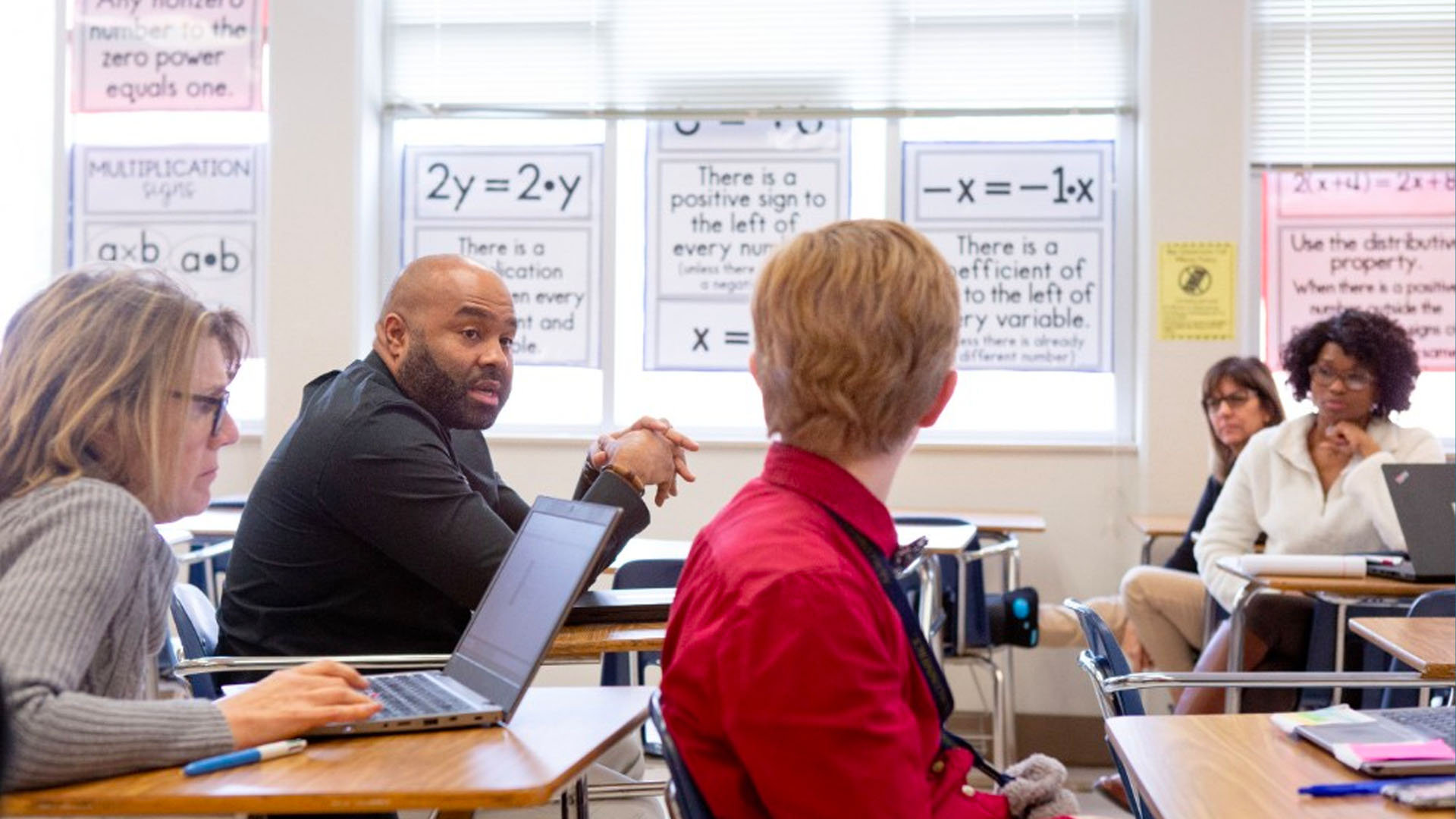Being a teacher for the past six years has been both an amazing and challenging experience. I have had the wonderful opportunity to guide my students as they learn and explore the world around them. Teaching is one of the most important jobs out there, yet as educators, we continue to face many challenges as we step into our classrooms each day. For a job that requires such a high level of social interaction, teachers often experience a large amount of isolation. Teachers can become overwhelmed with the responsibilities they bear and often do not have the resources they need to connect with each other. They can end up isolated in the four walls of their classroom with minimal time to collaborate with other teachers. Feeling the weight of the success of your students as something that you are solely responsible for as a teacher is overwhelming. Feelings of isolation are something that any teacher can experience regardless of how many years they have been in the classroom. As a new teacher I remember feeling a sense of worry and anxiety as I was navigating my first classroom. Our young educators are often thrown into their work with minimal support. School districts require they attend new teacher meetings, but beyond these monthly meetings they are often left to figure it all out on their own. I was lucky and started my career by joining a team that supported me and helped guide me the first years on the job. Not every young educator has access to this same type of support. Our veteran teachers are increasingly becoming exhausted and burnt out. In our profession, we are the strongest when we work in collaboration with each other, yet we continue to be stuck within the boundaries of our classrooms. We have learned to bear the burden of figuring out how to find solutions on our own instead of letting our colleagues support us when we feel overwhelmed. From my own personal experience I can say that when teachers have mentors, colleagues, and support systems in place that allow them to collaborate and seek guidance, the feelings of being isolated and overwhelmed are lifted. Continuing to learn and grow as an educator I believe it is an important task; however, if we are truly going to connect educators with each other, we need to think outside the box to find a solution that will have a long lasting impact. If teachers had mentors and colleagues they can turn to at any point of time when they are in a state of being overwhelmed, then as a profession we would be able to reduce the amount of stress and isolation teachers can experience on a daily basis. Building a community where teachers feel they can turn to when no one else will listen, or when they don’t know where to start, can provide a better experience for our teachers. Creating a virtual professional learning community as a system of support can actively work to reduce teacher isolation.
Teacher Led, Teacher Ed: Creating Systems of Support
 Professional Learning Communities (PLC) are a structure in our school system that every teacher is familiar with. These teams are designed to be a collaborative effort in teaching our students, but all too often they become a meeting once a week where teachers briefly discuss a topic from a preset agenda. After this meeting they return to their classroom where they are left alone to teach their students. When a PLC is not highly functioning and lacks the support teachers need, it can become frustrating. But what if we create a PLC that breaks down the boundaries of collaboration and provides teachers with a place they can get support whenever they need it, not just during meetings once a week? By creating systems of support designed specifically for our teachers we can help reduce this sense of isolation. Teacher Led, Teacher Ed is a virtual PLC that supports teachers in content specific methods that are considered best practice in their areas of expertise. This program was created for Butler University’s College of Education and utilized the relationship the COE has built between their current students, staff and alumni. What is unique about this professional learning community is that both pre-service and in-service teachers play a vital role. The in-service teachers shared their wealth of knowledge by developing the content based on their own experiences in the classroom. Then the pre-service teachers used the PLC as they worked to navigate their student teaching, as well as, having continued access to this community post-graduation. One of the most significant benefits of participation in the program is it reduces a sense of isolation for both pre-service and veteran teachers.
Professional Learning Communities (PLC) are a structure in our school system that every teacher is familiar with. These teams are designed to be a collaborative effort in teaching our students, but all too often they become a meeting once a week where teachers briefly discuss a topic from a preset agenda. After this meeting they return to their classroom where they are left alone to teach their students. When a PLC is not highly functioning and lacks the support teachers need, it can become frustrating. But what if we create a PLC that breaks down the boundaries of collaboration and provides teachers with a place they can get support whenever they need it, not just during meetings once a week? By creating systems of support designed specifically for our teachers we can help reduce this sense of isolation. Teacher Led, Teacher Ed is a virtual PLC that supports teachers in content specific methods that are considered best practice in their areas of expertise. This program was created for Butler University’s College of Education and utilized the relationship the COE has built between their current students, staff and alumni. What is unique about this professional learning community is that both pre-service and in-service teachers play a vital role. The in-service teachers shared their wealth of knowledge by developing the content based on their own experiences in the classroom. Then the pre-service teachers used the PLC as they worked to navigate their student teaching, as well as, having continued access to this community post-graduation. One of the most significant benefits of participation in the program is it reduces a sense of isolation for both pre-service and veteran teachers.  During the development of the program it allowed the teachers creating the content to see what other educators were doing in their own classrooms, and therefore felt they were able to reconnect with colleagues they had not worked with recently. Teacher Led, Teacher Ed became a resource for veteran teachers to turn to when they needed it. It creates a functional PLC for the teachers that do not have one of their own. It is common for pre-service teachers to feel overwhelmed and nervous when it comes to things like unit planning and breaking down standards. The anxiety they feel as they are about to step into their first classroom can easily be reduced by providing a system of support for them rather than leaving them to navigate their new career on their own. The virtual PLC provides a resource for these teachers to turn to when they need to see content-specific examples from a more experienced teacher.
During the development of the program it allowed the teachers creating the content to see what other educators were doing in their own classrooms, and therefore felt they were able to reconnect with colleagues they had not worked with recently. Teacher Led, Teacher Ed became a resource for veteran teachers to turn to when they needed it. It creates a functional PLC for the teachers that do not have one of their own. It is common for pre-service teachers to feel overwhelmed and nervous when it comes to things like unit planning and breaking down standards. The anxiety they feel as they are about to step into their first classroom can easily be reduced by providing a system of support for them rather than leaving them to navigate their new career on their own. The virtual PLC provides a resource for these teachers to turn to when they need to see content-specific examples from a more experienced teacher.
 Creating Your Own Virtual Professional Learning Community
Creating Your Own Virtual Professional Learning Community
A virtual professional learning community can be created by any educator that is looking to connect with others. In the past two years, teaching during the Covid-19 pandemic, educators have figured out how to advance their use of technology, and this knowledge can easily be transferred into developing virtual collaborative support for our teachers. A professional learning community in a virtual format increases accessibility of support to teachers as the boundaries on which one can collaborate have been lifted. Individual schools, school districts, universities, etc. can utilize the technology they have available to them to create their own virtual systems of support that will connect educators with each other. One of the biggest challenges in designing systems of support for teachers is figuring out where to start. A benefit of using a virtual format is that it can be personalized to whatever your teachers need. When we created Teacher Led, Teacher Ed we had a lot to consider at each step of the development process.
Building a community where teachers feel they can turn to when no one else will listen, or when they don’t know where to start, can provide a better experience for our teachers.
Steps in creating your own virtual PLC
- Identifying Goals – What is the purpose for creating your virtual PLC? What do you want members of the PLC to take away from their participation?
- Choosing Technology – When picking the platform to use for your virtual PLC there are multiple things to consider.
- Learning Management Systems (LMS) are great for virtual PLCs because teachers already have extensive experience with building content in their school’s LMS.
- If your PLC participants cross multiple organizations, it is important to consider how everyone will have access to the PLC. If it is not possible to use your school’s LMS, consider using a program like a Google Site.
- Creating Content – Identify who will create the content and the content being included.
- Find teachers, administrators, instructional coaches, etc. who can help you build content to support the goals of your PLC. The collaboration in the creation of the content is just as beneficial for the participants as the interaction they have with the content. Every educator has passion areas they are experts in. Tap into the expertise of your colleagues when asking someone to create content for your virtual PLC.
- There is an endless amount of content that can be added to a virtual PLC. It is important to curate content that is relevant and facilitates the goals of the PLC.
- Maintenance & Updates – As with any piece of technology there is maintenance that is needed to keep it running efficiently. Putting together a plan on who will fix any issues that arise (ie. broken links) and who will update materials will help your virtual PLC run smoothly and be sustainable in the long run.
Our teachers deserve the support provided by a system that celebrates a collaborative environment that can become their own mentor that is always there. By creating a virtual professional learning community we can provide support for teachers that will help reduce feelings of being isolated and overwhelmed.
Resources
Please login or register to claim PGPs.
Alternatively, you may use the PGP Request Form if you prefer to not register an account.



